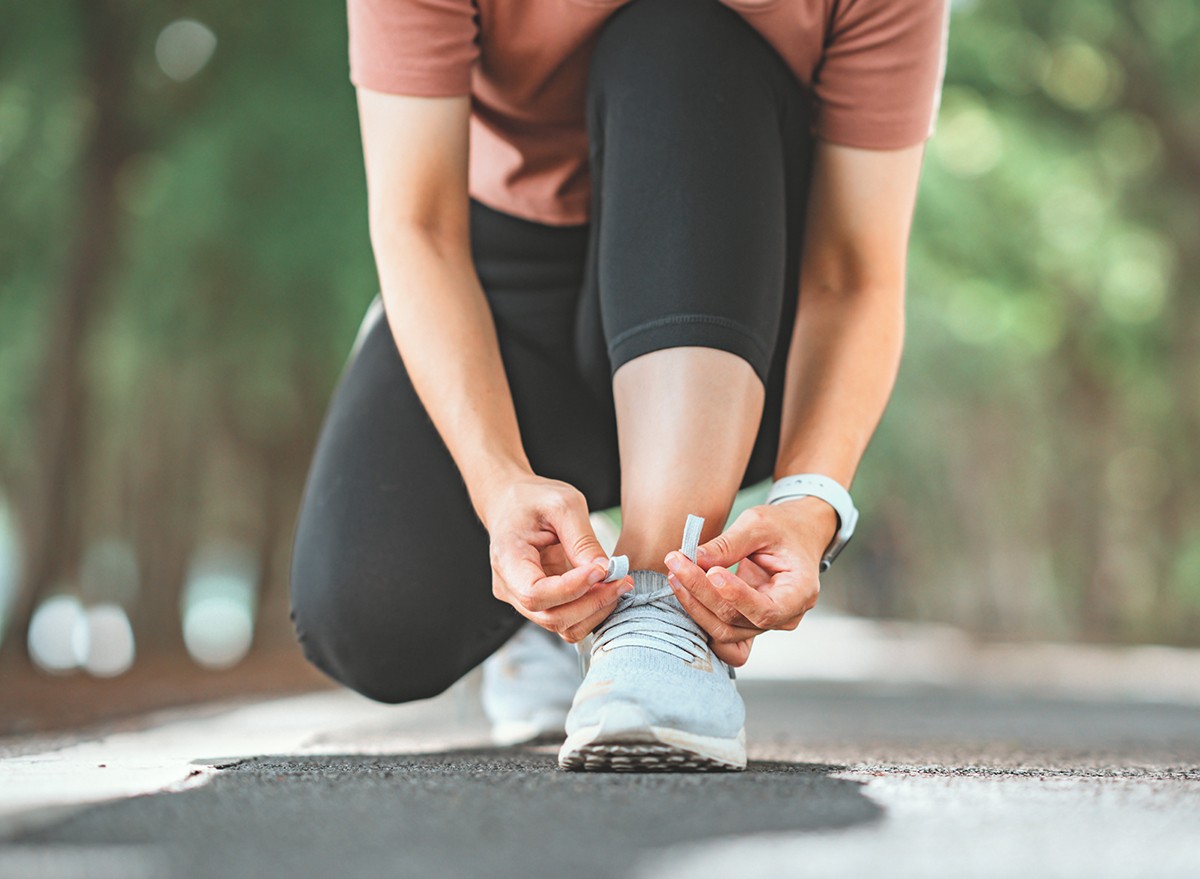I’m a Doctor Who Walks Daily—Try My 5 Proven Tips for Maximum Health Benefits

As a Doctor of Physical Therapy, I’ve witnessed the transformative power of walking in both my patients’ lives and my own. This simple, accessible form of exercise offers a myriad of benefits for physical and mental health. In this article, I’ll share my personal experiences, patient success stories, and professional insights on how to make the most of your daily walks. From varied workout plans to proper techniques and combining walking with other exercises, I’ll guide you through the steps to improve your overall health and fitness levels. Join me as we explore the incredible world of walking and discover how it can revolutionize your well-being.
RELATED: Silent Walking Is the Latest Wellness Trend Everyone’s Talking About
How I Witnessed a Patient’s Transformation Through Walking

Working in physical therapy, I get the chance to meet people with significant ranges of fitness and overall well-being. One specifically comes to mind when considering the benefit of walking. This patient came to me struggling with chronic back pain and limited mobility. Her doctor recommended walking as a low-impact exercise to complement her physical therapy. Initially, Sarah was hesitant due to the significant pain and suffering she had already endured. However, after incorporating short walks into her daily routine and gradually increasing the duration, she noticed significant improvement. Her pain diminished, and she found that walking not only helped her physically but also significantly boosted her mood and energy levels. It was incredibly rewarding to see how something as simple as walking made such a profound difference in her life, especially given how debilitated she had been previously. Now, she is one of my favorite patients, and she recommends this simple exercise to everyone she meets.
My Personal Journey with Walking: From Stress Relief to Family Bonding

On a personal note, I have always enjoyed early morning walks, especially with my husband and children. I find that starting my day with a walk clears my mind, sets a positive tone for the rest of the day for everyone, and also helps regulate our sleep schedules. Years ago, during a particularly difficult season with studying consuming most of my days, my morning walks became a crucial part of my self-care routine. They provided me with a moment of calm and reflection, helping me manage stress and maintain a balanced mindset. Additionally, walking is an incredibly easy way to maintain an overall healthy lifestyle. Surprisingly, walking engages more muscles than running and contributes significantly to physical health. I even recruited my family members to join me on walks after dinner as well, which not only aids digestion but also helps us connect with nature and each other. Walking has become one of my favorite forms of exercise and is my ideal way to start and end each day.
My Favorite Walking Workout Plans: From Intervals to Nature Walks

Walking is incredibly versatile, and it has been deemed one of the best forms of exercise not only because of the physical and mental health benefits but also because it is low impact, can easily be incorporated to improve compliance to daily exercise, and is possible for people of all ages and fitness levels. I love incorporating interval walking into my routine and have seen amazing benefits! Alternating between high-intensity bursts and slower recovery phases not only boosts cardiovascular health but also strengthens muscles without putting too much strain on the body.
Why I Love Power Walking

Power walking is another favorite of mine—walking briskly while swinging arms vigorously really engages the core and upper body, improving overall strength and posture. On weekends, I often head out for nature walks. There’s something about the change in scenery and the fresh air that makes the exercise feel restorative and mentally refreshing. With nature walks, it can be more challenging based on changes in terrain and speed. When the weather isn’t cooperating, I’ll walk indoors, either on a treadmill or around a mall. With treadmills, a simple added incline can really increase the intensity. Adding hand weights or a weighted vest to these walks has also been a great way to increase the challenge and build muscle.
RELATED: Walking Pads Are the Latest Wellness Trend Everyone’s Talking About
How I Progress and Challenge Myself with Walking Workouts

As I progressed with my walking routine, I found that gradually increasing the duration of my walks—by 5-10 minutes each week—helped build my endurance while keeping me injury-free. I also started incorporating hills and varied terrain into my walks. There’s a particularly steep hill in my neighborhood that was a challenge at first, but now I use it to push myself further and build strength. Adding intervals or short bursts of faster walking has also been a game-changer. It’s amazing how just a few seconds of increased speed can elevate the intensity of the workout. Another trick I use is walking with Nordic poles. They engage my upper body and turn a regular walk into a full-body workout, which keeps things interesting.
How I Combine Walking with Other Exercises for Optimal Results

Combining walking with other exercises has made my fitness routine more well-rounded. For instance, I often do a quick strength workout, including squats, lunges, and push-ups, before or after my walks. This approach helps build muscle and boosts my metabolism. Stretching is also crucial; I’ve noticed that doing dynamic stretches before my walk and static stretches afterward significantly improves my flexibility and reduces the risk of injury. Adding yoga or Pilates into my weekly routine has been fantastic for enhancing my core strength and balance. On days when I want a change of pace, I’ll switch to low-impact activities like cycling or swimming, which provide variety and reduce the risk of overuse injuries. For a more intense challenge, I combine walking with high-intensity interval training (HIIT), incorporating exercises like jumping jacks or burpees mid-walk to keep the workout exciting and effective.
My Tips for Proper Form and Technique to Prevent Injuries

Maintaining proper form while walking is key to preventing injuries. I always focus on standing tall, with my shoulders relaxed and my chin level. This posture helps reduce strain on my back and neck. I keep my arm swing natural, with elbows bent at 90 degrees, which aids in balance and momentum. I avoid over-striding by keeping my steps natural and not too long, which helps prevent joint stress. Paying attention to my foot strike—landing on my heel and rolling through to my toes—ensures an even distribution of impact and reduces strain on my knees and hips. I also practice deep, rhythmic breathing to enhance oxygen flow and maintain my energy levels throughout the walk. If I ever experience discomfort, I make sure to adjust my form and consult with a professional to address any potential issues that may arise and contribute to difficulty continuing on my daily walking journey!
How Walking Workouts Have Improved My Overall Health and Fitness Levels

Walking has been a cornerstone of my fitness routine, offering numerous health benefits. It has greatly improved my cardiovascular health by noticeably improving my tolerance to activity. I’ve also found it effective for managing my weight; regular walking helps me burn calories and maintain a healthy weight without being overly strenuous. Beyond the physical benefits, walking has a positive impact on my mental health. It reduces stress, anxiety, and depression thanks to the release of endorphins and the calming effect of the activity. Walking also strengthens bones and joints, which is particularly important for preventing osteoporosis and maintaining joint health. Walking has been shown to boost endurance and energy levels, making daily activities easier and helping manage fatigue. Plus, walking with friends has made it a social activity I look forward to, adding an extra bit of enjoyment to my fitness routine. Any single one of these reasons is an incredible reason to pick up a daily walking routine.
RELATED: Why Walking Only 3,867 Steps a Day Is All You Need, Science Says
How to Start Your Walking Journey Today

- Begin with short walks: Start with 10-15 minute walks and gradually increase duration by 5-10 minutes each week.
- Try interval walking: Alternate between 1 minute of brisk walking and 1 minute of normal-paced walking for a more effective workout.
- Incorporate power walking: Swing your arms vigorously while walking briskly to engage your core and upper body.
- Explore different terrains: Mix up your routine with nature walks or hill climbs to challenge yourself.
- Use proper walking form: Stand tall, keep your chin level, and maintain a natural arm swing with elbows bent at 90 degrees.
- Warm up and cool down: Do dynamic stretches before your walk and static stretches afterward to improve flexibility and prevent injury.
- Combine walking with strength training: Add bodyweight exercises like squats, lunges, or push-ups before or after your walk.
- Make it social: Invite friends or family members to join you on walks for added motivation and bonding time.
- Use walking as stress relief: Schedule morning or evening walks to clear your mind and set a positive tone for your day.
- Track your progress: Keep a log of your walking routines to stay motivated and see your improvement over time.
- Remember, consistency is key. Start with what feels comfortable and gradually increase your efforts. Your body and mind will thank you for making walking a regular part of your daily routine!